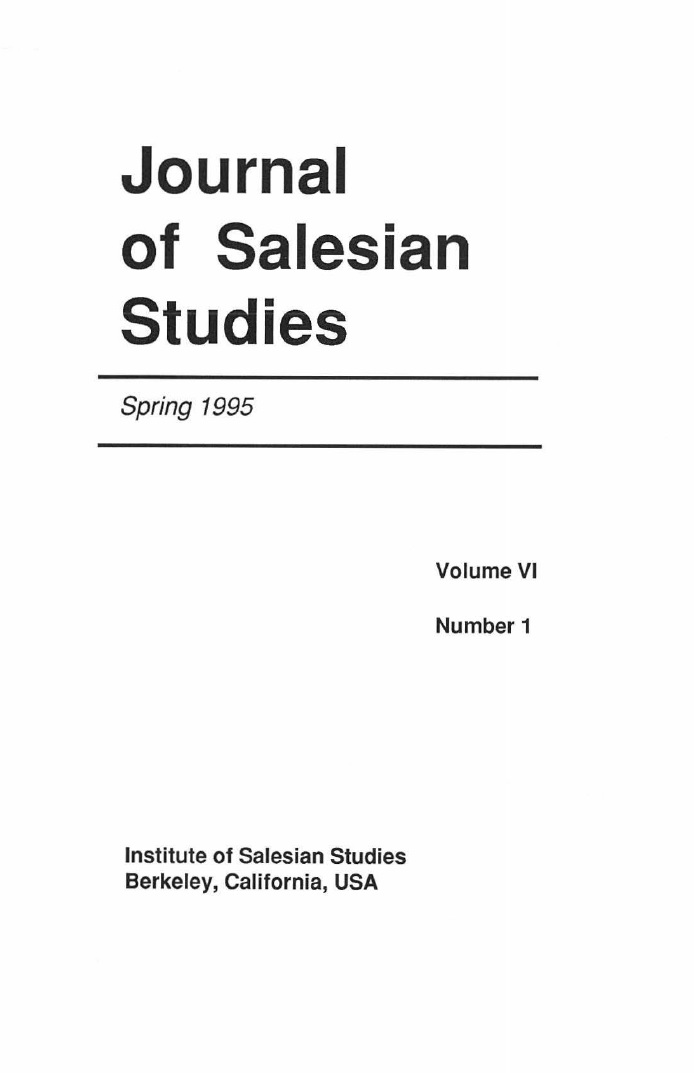The present study aims, not at any new interpretation, but simply at describing some aspects of the actual circumstances of the origins on the basis of fresh documentation now available. In particular, restricting the field of inquiry, I will focus on the young people who were protagonists in Don Bosco’s work at its origin.
After a brief description of the social world of certain categories of young people at the time, the very situation which elicited Don Bosco’s response, I will present material dealing with the beginnings and early development of Don Bosco’s two earliest and foremost institutions, the Oratory and the Home attached to the Oratory. To this effect I will present extensive excerpts of the relevant documents in what I believe to be an accurate, as well as readable, translation. I will also provide the text of some documents in appropriate appendices. My concern is to let the documents speak for themselves, my comments being directed more toward underscoring certain points made in them rather than reaching a critical decision on any of those points.
INDEX
- Introduction
- Part I: Turin in the 1840s and the “Poor and Abandoned” Young People at Risk
- 1. Demographic Shift, Population Increase and Urban Expansion
- 2. The Northern Districts
- 3. The “Poor and Abandoned”: Young People and Children at Risk
- Part II: Don Bosco and Young People at Risk: The Beginnings of the Oratory and of the Home Attached to the Oratory
- 1. The Beginnings of the Oratory in Don Bosco’s Memoirs
- 2. The Beginnings of the Oratory in Don Bosco’s Early “Official” Statements
- 3. Comment of the Garelli Tradition
- 4. Further Statements by Don Bosco on the Origin of His Work
- II. Beginnings of the Home Attached to the Oratory of St. Francis de Sales
- 1. Settling at Pinardi’s: Don Bosco’s Letter of March 13, 1846 to Marquis Michele Cavour, Vicar of Turin
- 2. The Beginnings of the Home or Shelter attached to the Oratory of St. Francis de Sales (Casa Annessa)
- Part III: Don Bosco’s Abiding Commitment to the “Poor and Abandoned”
- 1. Don Bosco’s Letter to King Victor Emmanuel II, before November 14, 1849
- 2. Letter to the Administrators of the Mendicita Istruita, February 20, 1850
- 3. Letter to Father Antonio Rosmini, March 11, 1850
- 4. Don Bosco’s First Raffle Appeal, December 20, 1851
- 5. Letter to Mayor Giorgio Bellono, November 8, 1852
- 6. Letter to the City Council, August 3, 1853
- 7. Letter to Count Clemente Solaro della Margarita, January 5, 1854
- 8. Letter to Mayor Giovanni Battista Notta, January 25, 1855
- 9. To Defense Minister Giacomo Durando, probably November 1855
- 10. Invitation to a Raffle, February [21], 1857
- 11. Invitation to a Raffle, [January 30 1862]
- Comments and Conclusion
- Appendices
- Appendix I
- Appendix II
- Appendix III
Reference time period: 1840 – 1862
A. Lenti, “Don Bosco’s love affair with «poor and abandoned» young people and the beginnings of the oratory” in «Journal of Salesian Studies», 6 (1995), 1, 1-80.
Reference institution:
Institute of Salesian Studies
